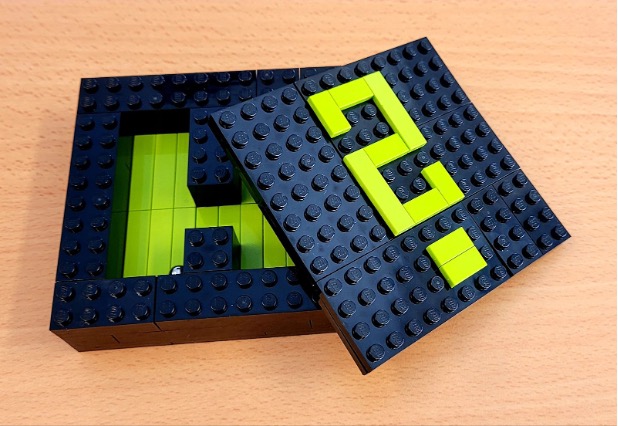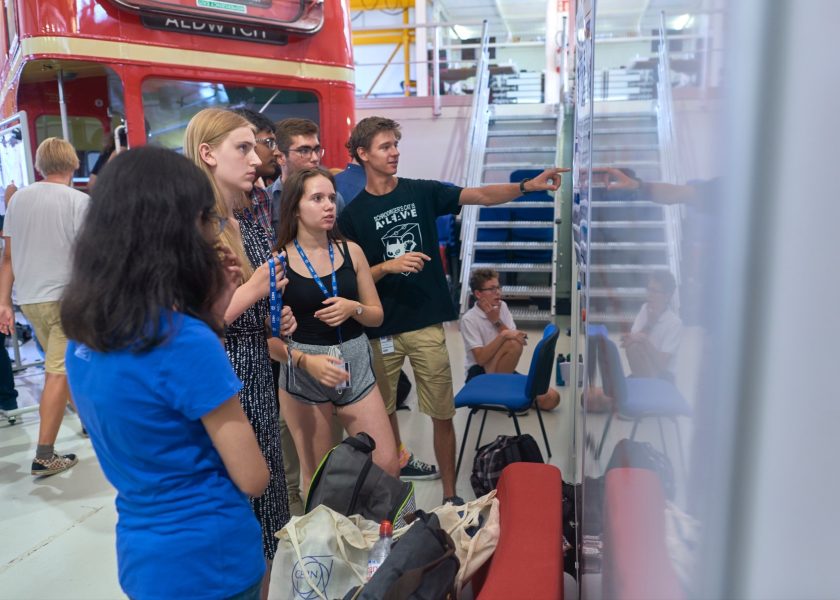Supporting materials
Overview of the nature of science
Download
Download this article as a PDF

Thinking outside the box: explore the nature of science by building LEGO mystery boxes and challenging your students to solve the puzzle.
How do we make informed decisions based on scientific evidence? Learning about the nature of science can help us with that challenge. The nature of science describes the values and underlying assumptions that are intrinsic to scientific knowledge. As such, understanding the nature of science is considered to be the core of scientific literacy.[1]
Research shows that different aspects of the nature of science are important for high-school students and should be taught explicitly.[2,3]
This activity teaches students the following:
Mystery-box activities are a powerful educational tool for teaching nature-of-science concepts.[4, 5] Mystery boxes come in various shapes and sizes, from closed boxes with simple everyday objects to water-based mystery boxes with systems of water tanks. You can find out more about different mystery boxes on the S’Cool LAB website: https://scoollab.web.cern.ch/mystery-boxes.

Activities with mystery boxes support students in experiencing different scientific methods and increase their understanding of the nature of science. These mystery-box activities can be used with students aged 14 and above and can be completed in around 90 minutes altogether, although teachers can decide to spend more time on the discussion.
The mystery boxes should be prepared before the activity. We use mystery boxes built with LEGO, as shown in figure 1. The internal structure is shown in figure 2. However, other mystery boxes can be used as well, for example, 3D-printed mystery boxes (https://scoollab.web.cern.ch/mystery-boxes).
The mystery box setup includes the following:

The mystery boxes could also be built by a colleague and not the teacher directly. This reduces bias and enhances the experience of scientific exploration.
Important note: While it is tempting, NEVER open the mystery box, as that is not how science works. If students cannot resist the temptation, glue the box together (that’s what we did).
At the beginning of the activity, the students are split into groups of 3–4. The teacher introduces the mystery-box activity to the students by explaining how the observation will take place.
Each group of 3–4 students receives
Scientific research is most often guided by theoretical models. In particular, modern research investigations rarely begin with a neutral observation of a phenomenon. For example, the theoretical prediction of the Higgs boson in 1964 guided the development of experiments that discovered the Higgs boson in 2012 – 48 years later! However, in the past, scientific research often stemmed from direct observations.

In this activity, students put their ideas from Activity 1 into practice and try to identify the structure of the mystery box.
Each group receives
Observations of natural phenomena are the basis of scientific claims. Scientists may make direct observations with their senses or measuring instruments. Alternatively, indirect observations may be made. With indirect observations, we only observe the results of the phenomenon, for example, we only hear the ball hitting the walls of the mystery box but cannot see the walls directly. In the end, scientists interpret their observations based on the relevant theoretical models to infer a scientific claim.
Exploration of the mystery boxes can be done in a more detailed way by using a strong neodymium magnet as a probe. In this case, the ball inside the mystery box should be made of steel for the magnet to have an effect. After using the magnet, the students can update the theoretical models based on their detailed observations.
Neodymium magnets are very strong so they should be handled with care to avoid injuries and should not be placed close to electronic equipment.
After proposing a model that is consistent with the observations of the mystery box, further testing is needed to support it. One way to do this is to build a model mystery box and see if it behaves the same way as the original mystery box.
Each group receives
Scientific investigations are not merely a rational and systematic activity. Scientists often need to be creative. For example, experimental designs often call for creative solutions using the materials and technology available. Similarly, finding better scientific explanations often requires thinking outside the box.
The first ever picture of a black hole required a very creative solution. Since none of the telescopes on Earth were powerful enough to record a good picture of a black hole, eight telescopes around the world were turned towards the same spot.[7] Likewise, biological structures are complex systems that often cannot be directly observed or understood from the knowledge of their constituents alone, so biologists need to come up with creative solutions. For example, to study the role of a protein in an organism, they may inhibit it and observe the consequences.
Before this activity, students can be asked to write a scientific proposal for a grant to receive additional equipment, for example, LEGO for building a test mystery box. The students would only receive additional equipment after they had described their findings and explained their predictions. Additionally, any extra equipment could have an assigned price that students need to consider with respect to their ‘budget’. This step enables further discussion about how science is socially embedded.
After completing the mystery box exploration, the groups present their study to the rest of the class. Through peer review of the presentations, students reach a consensus on the internal structures of the mystery boxes.

Each group receives
Scientific discoveries are shared with the scientific community in the form of conferences and publications. For example, the discovery of the Higgs boson at CERN was presented both live and through a videoconference to scientists around the world on 4 July 2012, and the scientists published two scientific papers on their findings. When papers are submitted for publication, they are anonymously reviewed by several independent experts to verify the methods, results, and conclusions. Through this anonymous feedback, scientists also receive suggestions to improve their work. After publication, the results are scrutinized by other researchers in the field. As more and more evidence is collected, the scientific community can reach a consensus.
At the end of the project, you can use the provided nature-of-science overview table to discuss the different aspects of the nature of science.
The mystery boxes from different teams can also be different. If the groups are unaware that there are differences between the mystery boxes, the conference part of the activity can be even richer, as they will discuss how to find differences and similarities between their models.
Instead of (or in addition to) poster presentations, students could write research reports describing their findings. These papers can then be anonymously peer reviewed by classmates to mimic the real publishing process in science.
The activities presented in this article are designed to enable students to experience the theoretical, empirical, inferential, creative, tentative, and social aspects of the nature of science in a hands-on and exploratory approach.
[1] Shwartz Y, Ben-Zvi R, Hofstein A (2005) The importance of involving high-school chemistry teachers in the process of defining the operational meaning of “chemical literacy”. International Journal of Science Education 27: 323–344. doi: 10.1080/0950069042000266191
[2] Abd‐El‐Khalick F, Lederman NG (2000) The influence of history of science courses on students’ views of nature of science. Journal of Research in Science Teaching 37: 1057–1095. doi: 10.1002/1098-2736(200012)37:10<1057::AID-TEA3>3.0.CO;2-C
[3] Lederman NG (2006) Syntax of nature of science within inquiry and science instruction. In Flick LB, Lenderman NG (eds) Scientific Inquiry and Nature of Science pp 301–317. Springer. ISBN: 978-1-4020-2671-3
[4] Lederman N, Abd-El-Khalick F (1998) Avoiding de-natured science: activities that promote understandings of the nature of science. In McComas WF (ed) The Nature of Science in Science Education pp 83–126. Springer. ISBN: 978-0-7923-5080-4
[5] Upmeier zu Belzen A, Merkel R (2014) Einsatz von Fällen in der Lehr- und Lernforschung. In Krüger D, Parchmann I, Schecker H (eds) Methoden in der Naturwissenschaftsdidaktischen Forschung pp. 203–212. Springer Spektrum. ISBN: 978-3-642-37826-3
[6] Barrett PM (2005) The diet of ostrich dinosaurs (Theropoda: Ornithomimosauria). Palaeontology 48: 347–358. doi: 10.1111/j.1475-4983.2005.00448.x
[7] Akiyama K et al. (2019) First M87 event horizon telescope results. IV. Imaging the central supermassive black hole The Astrophysical Journal Letters 875: 1–52. doi: 10.3847/2041-8213/ab0e85
Overview of the nature of science
Download this article as a PDF